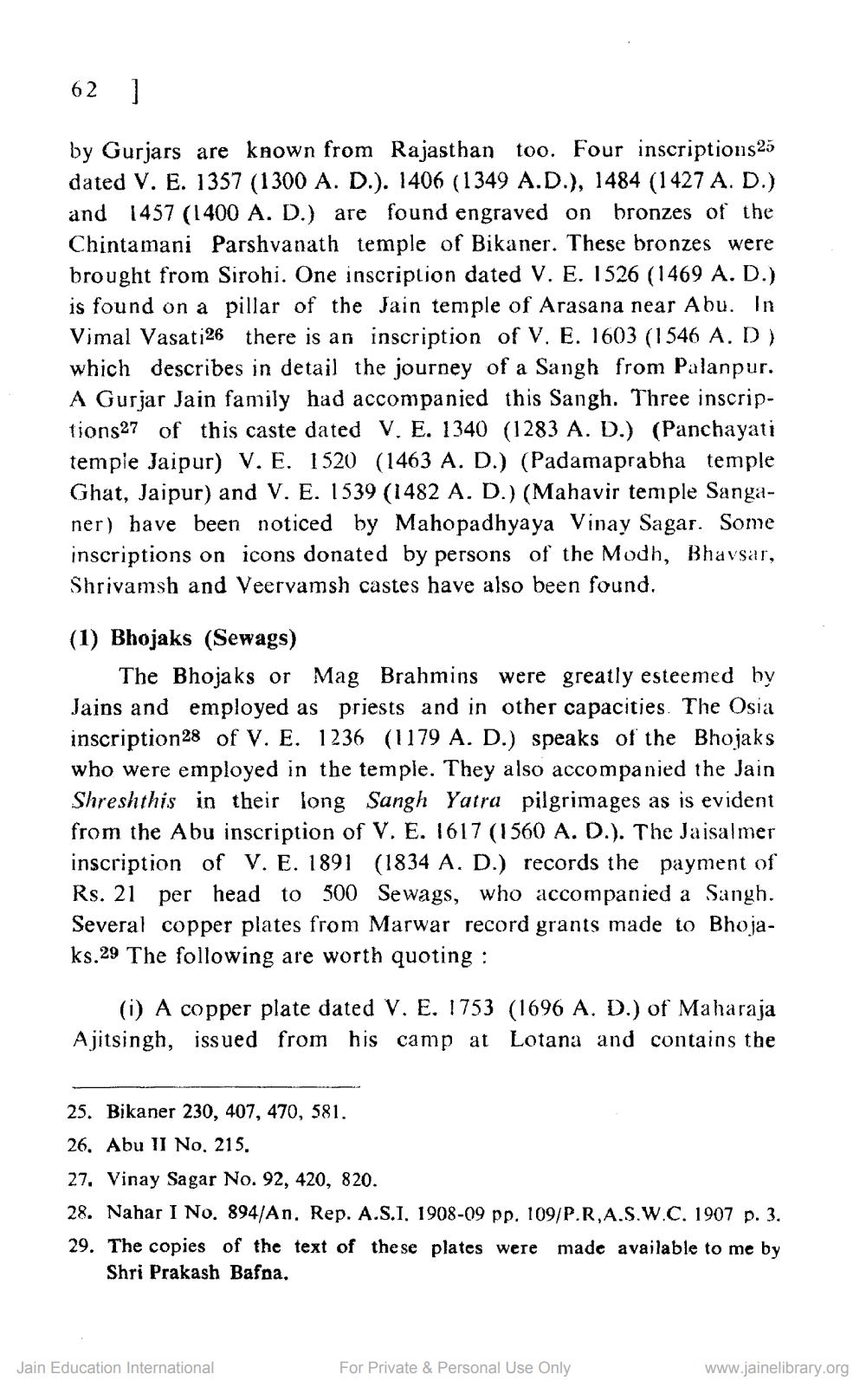________________
62
1
by Gurjars are known from Rajasthan too. Four inscriptions25 dated V. E. 1357 (1300 A. D.). 1406 (1349 A.D.), 1484 (1427 A. D.) and 1457 (1400 A. D.) are found engraved on bronzes of the Chintamani Parshvanath temple of Bikaner. These bronzes were brought from Sirohi. One inscription dated V. E. 1526 (1469 A. D.) is found on a pillar of the Jain temple of Arasana near Abu. In Vimal Vasati26 there is an inscription of V. E. 1603 (1546 A, D ) which describes in detail the journey of a Sangh from Palanpur. A Gurjar Jain family had accompanied this Sangh. Three inscriptions27 of this caste dated V. E. 1340 (1283 A. D.) (Panchayati temple Jaipur) V. E. 1520 (1463 A. D.) (Padamaprabha temple Ghat, Jaipur) and V. E. 1539 (1482 A. D.) (Mahavir temple Sanganer) have been noticed by Mahopadhyaya Vinay Sagar. Some inscriptions on icons donated by persons of the Modh, Bhavsar, Shrivamsh and Veervamsh castes have also been found.
(1) Bhojaks (Sewags)
The Bhojaks or Mag Brahmins were greatly esteemed by Jains and employed as priests and in other capacities. The Osia inscription28 of V. E. 1236 (1179 A. D.) speaks of the Bhojaks who were employed in the temple. They also accompanied the Jain Shreshthis in their long Sangh Yatra pilgrimages as is evident from the Abu inscription of V. E. 1617 (1560 A. D.). The Jaisalmer inscription of V. E. 1891 (1834 A, D.) records the payment of Rs. 21 per head to 500 Sewags, who accompanied a Sangh. Several copper plates from Marwar record grants made to Bhojaks.29 The following are worth quoting :
(i) A copper plate dated V. E. 1753 (1696 A. D.) of Maharaja Ajitsingh, issued from his camp at Lotana and contains the
25. Bikaner 230, 407, 470, 581. 26. Abu II No. 215. 27. Vinay Sagar No. 92, 420, 820. 28. Nahar I No. 894/An. Rep. A.S.I. 1908-09 pp. 109/P.R.A.S.W.C. 1907 p. 3. 29. The copies of the text of these plates were made available to me by
Shri Prakash Bafna.
Jain Education International
For Private & Personal Use Only
www.jainelibrary.org




